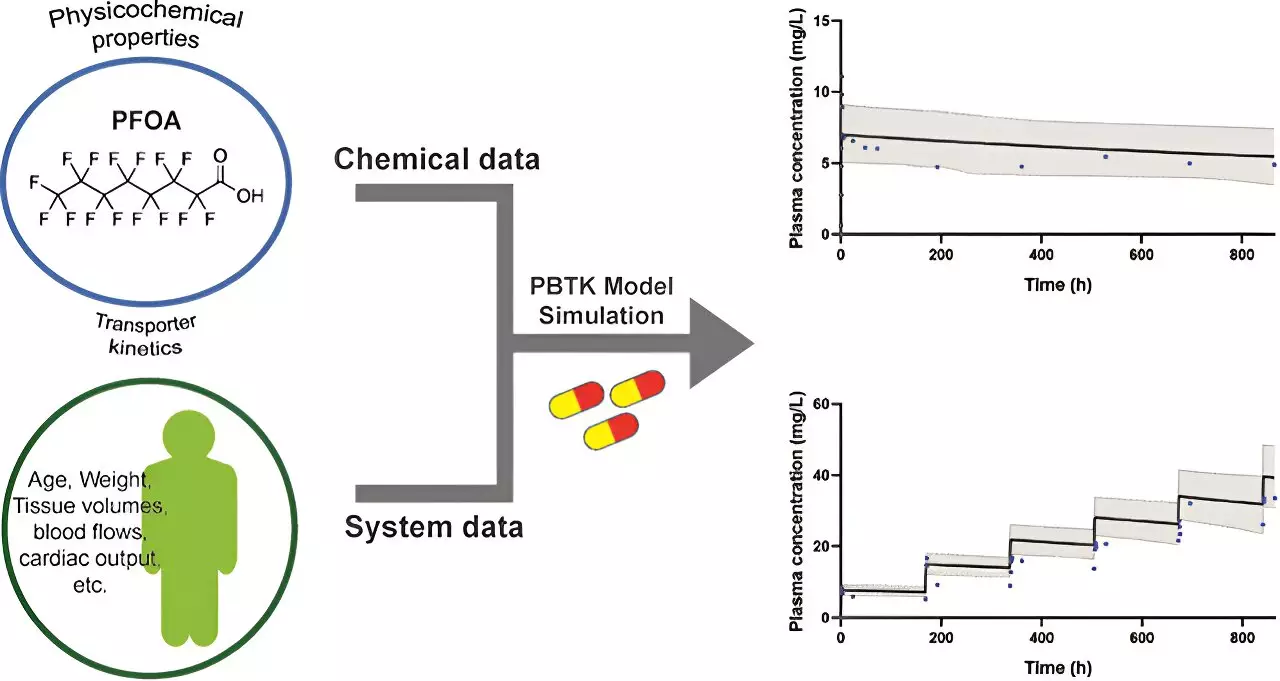Perfluorooctanoic acid (PFOA) is a persistent environmental contaminant found in various consumer products and is known to have negative health implications. Despite its widespread use and potential harm, limited research has been conducted on the critical levels of PFOA exposure and its elimination from the human body. However, a recent breakthrough by a team of scientists from A*STAR sheds new light on how PFOA is processed in the human body, providing valuable insights for the development of safer replacement chemicals and regulatory measures.
Led by Dr. James Chan, the research team utilized a virtual model that replicates the biological traits of the human body’s chemical processing mechanisms. This innovative approach allowed them to study how PFOA is processed and eliminated in the body. The findings revealed crucial information about the persistence of PFOA and its resistance to biological degradation, offering valuable knowledge for the industry and regulatory bodies.
PFOA is prevalent in various products such as non-stick cookware, food packaging, rugs, and cosmetics due to its oil-, water-, and heat-resistant properties. The primary route of exposure for humans is through oral ingestion. However, its persistence in the human body poses significant health concerns. Studies have linked PFOA exposure to liver and kidney cancer, thyroid issues, developmental effects on the immune and reproductive systems, and fetal development. Disturbingly, PFOA appears in 99% of tested blood samples from local cohorts in Singapore, indicating a high level of exposure and potential harm, particularly to women’s fertility.
The research findings provide insights into the mechanisms behind the high resistance of PFOA to biological degradation in humans. PFOA was discovered to bind strongly to blood proteins, limiting its filtration by the kidney and prolonging its elimination process. Additionally, the kidney reabsorbs PFOA from the urine, mistaking it for an essential nutrient due to its resemblance to fatty acids needed by the body. Furthermore, PFOA utilizes the same pathway as essential fatty acids to enter various body organs, thereby increasing its potential for harm.
Understanding how PFOA persists in the body is a crucial step towards the development of safer next-generation chemicals for industrial and consumer products. Armed with this knowledge, industries can design replacement chemicals that do not possess the same harmful properties as PFOA. Regulatory bodies can also utilize these insights to measure the impact of PFOA and set safety limits for products. By shedding light on the biology of PFOA, this research contributes to ensuring better population health and safety.
The research team is currently utilizing the virtual model to investigate the sources of PFOA exposure within the Singapore population. Moreover, they aim to expand their research to explore other Per- and Polyfluoroalkyl Substances (PFAS). PFOA is just one of over 14,000 such chemicals, and little is known about their potential harm. By using this innovative approach, regulatory bodies can measure the amount of PFAS present in consumer products, leading to improved safety measures and better protection for the population.
One notable aspect of this research is that it utilizes data of human origin rather than relying on animal models. This distinction allows for a more accurate understanding of the persistence of PFOA in humans. The study presents a rational explanation for the mixed data surrounding PFOA, with some studies suggesting shorter persistence while others report longer durations. The incorporation of human data brings clarity to these inconsistencies, emphasizing the importance of further studies on PFAS and other chemicals whose consequences are yet unknown.
Dr. James Chan, the senior author of the study, emphasizes the need for collaboration within the scientific community to understand the potential harm of various chemicals. While this breakthrough sheds light on PFOA, there remains a vast number of chemicals with undisclosed consequences. By working together, the scientific community can contribute towards better population health and develop safer alternatives to harmful substances.
The recent breakthrough by A*STAR scientists in understanding the processing and persistence of PFOA within the human body provides crucial insights for the development of safer replacement chemicals and regulatory measures. The utilization of a virtual model and data of human origin sets the stage for more accurate and reliable research in the field of chemical processing mechanisms and their potential health implications. With ongoing investigations into PFOA exposure and plans to expand research on PFAS, this breakthrough opens doors for further advancements and improved population health and safety.


Leave a Reply